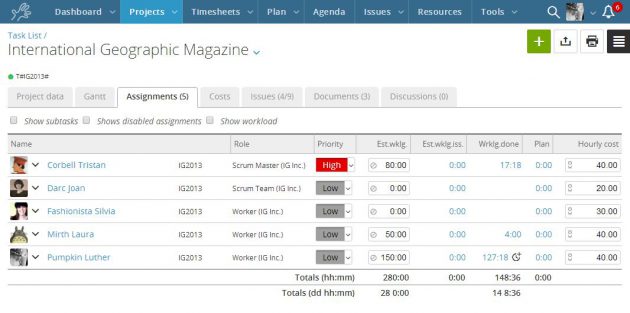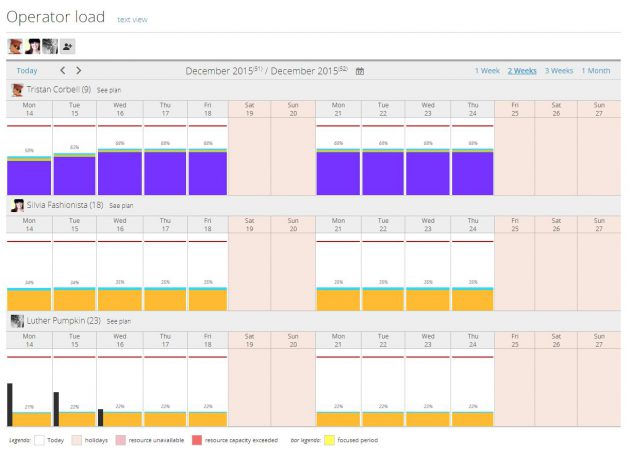Being able to organize the work time of your team is essential for the success of each project.
This is also because a project manager does not always have all the necessary resources to complete the project.
And even in the case when the resources are sufficient, during the execution of the project there are situations and potential risks that can, even suddenly, cut out this “luxury”.
Even when all the necessary resources are available, it is the responsibility of the project manager to use resources efficiently and save on company costs.
CONTENT INDEX
To achieve these goals, resource optimization techniques are required. Today, in particular, we see two of them:
- Resource leveling;
- Resource smoothing.
These techniques allow to complete the project with minimal obstruction.
Resource leveling
Resource leveling is used when resources are limited.
In these cases, project planning can be extended and one or more deadlines can be postponed.
If the resources are not available, in fact, the duration of the project could change.
Resource leveling is mainly used when:
- An important resource may not be available for a certain period of time;
- An important resource may not be available at a given time;
- One or more resources must be shared with another project;
- The demand for a resource is greater than the supply. If the demand for resources exceeds their availability, at any time, some activities may be delayed until the availability of resources becomes acceptable again.
This technique is also used when the use of resources has to be constant.
In the resource leveling, in fact, the limited resources should be optimized.
Resource leveling answers the question of when it will be possible to complete the project with the resources provided.
Resource leveling is sometimes also called resource constrained scheduling (RCS).
In this case, a project must be completed with the available resources, therefore the concept of “limited resources”.
Let’s make a concrete example of resource leveling that causes an extension of the planning and, therefore, a delay of the project.
We are developing a program for a two-story building project.
The construction of the first floor takes place without problems, but for the second floor an additional scaffolding is needed.
We find out that we have an extra scaffolding available in our company and that we can take it from another project, BUT we have to wait a week longer than the date we had set.
As a result, construction activities will be delayed by a week.
Resource smoothing
Resource smoothing is used when resources need to be optimized and planning can not be extended.
Since it is not possible to postpone one or more deadlines, the completion date of the project should remain the same.
In the resource smoothing, it is necessary to do everything possible to avoid any delay as it could affect the life cycle and planning of the project.
Time here is the main constraint.

There is a fixed and immutable program and therefore the resources should be optimized accordingly.
Resource smoothing is also known as time costrained scheduling (TCS).
TCS emphasizes the completion of a project within a certain period of time. Here, the start and end dates of the project are fundamental and have to be respected.
TCS also considers supply (availability) and demand (requirement) of resources. Here, however, there is a default limit for the resource request, which can not be exceeded.
Also in this case we make a concrete example.
Let’s sppose that a student has to take an exam and has allocated 60 hours in three months for studying. This means 20 hours a month.
However, while planning the exam date, he discovers that the only available appointment is in two months.
In this case the student must distribute these 60 hours in those two months, ie 30 hours per month.
This is a concrete example of resource smoothing.
Since the exam date can not be postponed, the student will have to work harder to reach his goal.
Otherwise, he will not pass the exam, which corresponds to the failure of the project.
The differences between resource leveling and resource smoothing
Let’s see some differences between resource leveling and resource smoothing:
- In the resource leveling the end date of the project can change, while in the case of resource smoothing it does not change;
- In resource leveling, the critical path of the project changes (generally increases), whereas in the case of resource smoothing it does not. The activities can also be delayed only within their float, planned at the start;
- Generally, resource smoothing is performed only after the resource leveling;
- In resource leveling, the resources themselves are the main constraint, while in resource smoothing the end date of the project is the constraint to be taken into consideration;
- Resource leveling is used when resources are under or over-allocated. Resource smoothing is used instead when resources are allocated unevenly;
- Resource leveling can be applied to activities during the critical path, while in resource smoothing, activities and the path generally do not touch.
The similarities between resource leveling and resource smoothing
The following are some similarities between the two:
- Both help optimize the use of resources;
- Both help to plan the analysis of the network.
Resource leveling and resource smoothing are different techniques that are used in different situations.
It is not always necessary to use both techniques; depending on the case, you can choose only one of them.
However, if both are used, as mentioned above, it is usually the resource leveling that preceds the resource smoothing, since it is necessary to consider the constraints of resources first, before being able to optimize them.
Resource leveling and resource smoothing are two optimization techniques for the resources.
If used, in any project the chances of completing the project successfully within the deadline and respecting the initially approved cost limits increase.
The essential difference is that resource leveling is used to balance the demand and supply of resources, while resource smoothing helps to ensure a uniform use of resources.
In Twproject, it is always possible to check the workload of your resources, both in the planning, as well as in the daily management of the project.
The more complete theinformation in Twproject, the more your graphs will approach reality.
For example, when you start a project, the first thing you have to say to Twproject is how much you intend to work on a project: you have to make an estimate.

The estimate is set by mutual agreement. This is also a way to engage the team.
Evaluating the necessary time, even with some variation and inaccuracy of estimation, is always an excellent exercise for the team members that are confronted with tasks and responsibilities.
But let’s get back to the potential of TWproject.
After setting the estimated time, accessing the “operator load”, you will obtain something like this:

On this page, for each resource of the selected team, you will have a graphical representation of the total load per day.
The representation is detailed: each color represents a different task.
By clicking on a column you will have a detailed explanation of the components of the load.
You can verify the collaborator’s load and use TWproject to improve work distribution.
In TW project plan and workload interact, collecting data from each source and in real time.
Have you ever implemented a resource smoothing or resource leveling during one of your projects?
Have you encountered any difficulties? Which?
Tell us about your experience.


